 Welcome to This Reading Mama! I hope you are enjoying these days spent in Word Study like I am. If you’re new, I’m nearing the end of a 10 day series on Using Word Study to Teach Spelling. You can click HERE or on the image above to view all the topics we’ve looked at thus far. I’m so glad I’m not the only one in this 10 day series…I’m joined by some amazing and VERY talented writers over at iHomeschool Network.
Welcome to This Reading Mama! I hope you are enjoying these days spent in Word Study like I am. If you’re new, I’m nearing the end of a 10 day series on Using Word Study to Teach Spelling. You can click HERE or on the image above to view all the topics we’ve looked at thus far. I’m so glad I’m not the only one in this 10 day series…I’m joined by some amazing and VERY talented writers over at iHomeschool Network.
So far, we’ve talked a lot about studying word patterns; mostly with the kinds of words that are phonetic, or easier to “sound out”. But what about those irregular words (a.k.a. sight words)? How do they fit in with word study? Let’s discuss!
What is a Sight Word?
Essentially, a sight word is any word a child knows by sight. Some people also use the term high frequency word. Even though they are not exact synonyms; for my purpose, let’s just say that they are. 🙂 Many teachers and curricula use either the Dolch list or Fry’s list. The words on these lists are ranked in order of most frequently used for each grade level.
Are Sight Words Important?
Yes, yes, and yes! Why? Because the first 100 words from Fry’s list alone make up 50% of what we read! Yes, 50%. Test it out for yourself. It holds true nearly every.single.time. So, if sight words are important for readers to learn, then how do they fit into a word study program, designed to study word patterns? I’m so glad you asked.
3 Ways that Word Study Helps with Sight Word Knowledge
1. It’s a Developmental Thing– We explored on Day 2 how the word study approach is based on spelling development. And naturally, learning sight words is also a developmental thing as well. As the child’s understanding of how words work blooms, she is empowered to use spelling and reading strategies to tackle those “tricky” words.
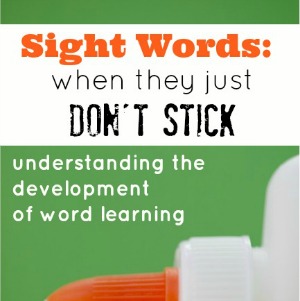 For more on sight words and reading development, I hope you’ll visit this post on help with sight words aren’t “sticking”. This concept of spelling and reading development really opened my eyes in the area of sight words.
For more on sight words and reading development, I hope you’ll visit this post on help with sight words aren’t “sticking”. This concept of spelling and reading development really opened my eyes in the area of sight words.
2. Tie in Phonics by Studying Word Patterns In Sight Words- Studying word patterns and chunks helps students to understand that we decode and read unknown words by analogy. Why is this important? Because proficient readers read by analogy, whether they realize it or not. When we ask kids to stop and look at word patterns (or phonograms), even those we find in sight words, we are helping kids become better readers and spellers.
To help spellers see the connections that patterns and sight words have created a spelling dictionary or notebook of sorts called I Can Spell Notebook {download HERE}. It includes:
directions,
a notebook cover,
a reproducible student page,
and a sample page.
The purpose of this notebook is to help kids make the connection between the word patterns they know and sight words they can spell. Spelling by analogy.
3. Oddballs- This is probably one of my favorite ways to use sight words in a word study program. Kids enjoy it as well.
Let’s use once again the word sort from Day 6: AI and AY. If I wanted to incorporate a sight word into this sort, the perfect one would be said. The student would first sort it under AI. Then, as we read through the AI column words, I might say something like this, “Hmmm…we read a word under that column that had the AI pattern, but it didn’t make the long a sound. We call it an oddball. Do you think you can find it?” If the child is unable, I’d re-read the words again, emphasizing and stretching out the middle vowel sound. (By the way, another oddball you could sneak in on this sort is the word they. Sounds like ay, but spelled EY.)
As students become more comfortable with word sorts, they can be informed that there’s an oddball (or two) lurking in their sort. Can they locate it by themselves? It sure is fun to try!
Need some more sight word ideas?
- I dedicate an entire chapter to teaching and holding kids accountable to sight words in my book, Teaching Kids to Spell. I also share lots of ideas for making sight word teaching hands-on and fun!
- Check out all the easy-peasy sight words games we played this past summer as well as my Pinterest Sight Word board!
- The Teaching of Sight Words (Part 1 and Part 2)
- Roll and Write Sight Words
If you enjoy my tips, activities and printables, I would encourage you to follow along in one or more of these ways so you don’t miss a thing!
- Subscribe by email
- Google+
- email me: beckythisreadingmama{at}gmail{dot}com
~Becky
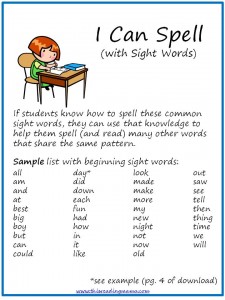
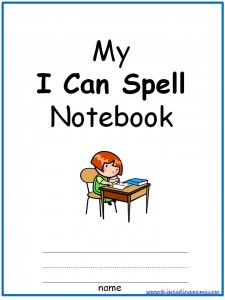
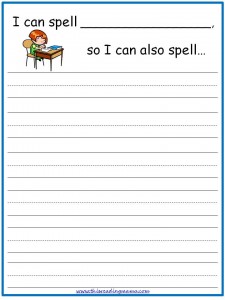
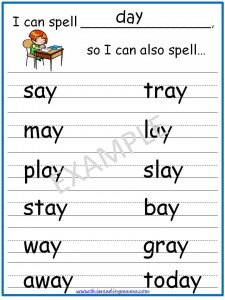
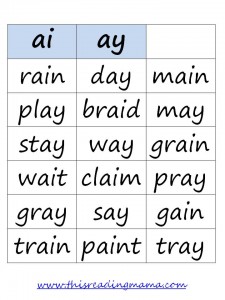
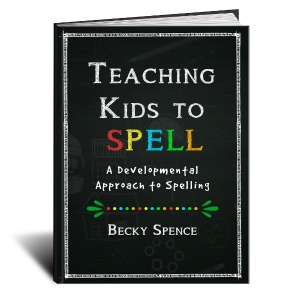
This series has been great! Thanks so much for sharing all of this information.
Thanks! And you’re welcome. 😉
Hi Becky- I can’t figure out how to download the freebie in this post.
Try it now. That was when I using a plug-in to load my printables that is no longer supported. I thought I had fixed them all. I guess this one slipped through the cracks! Thanks. 🙂
I got it!! Thanks!
Hi Becky, Thank you for all the wonderful things you had posted on the website! My son is on a higher functioning of autism. I used most of your work to go over with him at home so he can be caught up with his peers in school. I love the example page “I can spell Day so I can spell…(you listed all the words that have -ay ending)” I was wondering if you have more word examples like that so I can download. Thanks in advance for your help!